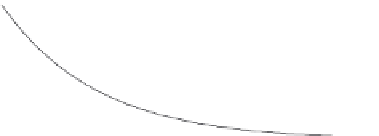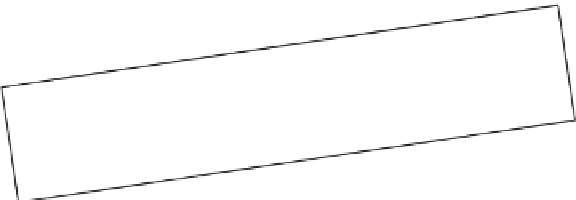Geoscience Reference
In-Depth Information
0.4
0.3
q
+
0.2
0.1
0
0
1
2
t
+
Fig. 10.25 Scaled outflow hydrograph
q
+
=
(
BP
c
) from a linearized hydraulic aquifer into an adjoining
open water body resulting from the precipitation event (10.127) given in Example 10.4. The full
series solution is represented by the heavy line and the first term in the series expansion by the
thin line. In this example
t
+
=
q
/
0
.
1 is taken to be roughly equivalent with one day.
D
WT
η
x=B
x
z
x
x=0
B
Fig. 10.26 Definition sketch of the cross section of an unconfined hillslope aquifer. The distance along the land
surface from the stream to the divide is
B
x
=
B
/
cos
α
.
10.4.3
Flow from a hillslope aquifer
Again, to derive the unit response function, it is convenient to consider the problem of
outflow from an initially saturated aquifer (Figure 10.26). While the aquifer empties out,
there is no surface recharge, so that the differential equation governing this phenomenon
is (10.90) with
I
0. In the case of a sloping aquifer, the total flow rate at any distance
x
from the channel can be determined from (10.26); after linearization, this is
=
k
0
α
∂η
∂
(
q
x
η
)
=−
η
0
cos
x
+
sin
αη
(10.132)
Therefore, the boundary condition at the divide, where
x
B
x
, is not simply the second
of (10.50), but it must be adjusted to simulate the impermeable barrier in accordance
=




























































































